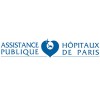
Hippotherapy to Improve the Balance of Children With Movement Disorders
Neuromuscular DiseasesCerebral Palsy3 moreThe purpose of this study is to determine if adding hippotherapy treatment will improve balance for children ages 5-17 who have disabilities such as cerebral palsy and down syndrome. We also want to find out if by improving their balance the children increase their participation in age appropriate activities.

Air Stacking vs Glossopharyngeal Breathing in Neuromuscular Diseases
Neuromuscular DiseasesNeuromuscular diseases (NMD) are characterized by a reduced maximum insufflation capacity (MIC), which contributes to increased morbidity and mortality from respiratory diseases. Techniques such as glossopharyngeal breathing (GPB) and insufflation using a manual resuscitation bag, or "air stacking (AS)", can be used to increase the MIC. These techniques employ different mechanisms, and the ability to learn the technique plays a key role in its proper implementation and effectiveness. The objective is compare the effects of AS and GPB on the MIC in patients with NMD. Children and adolescents with NMD who were users of non-invasive mechanical ventilation were recruited. Vital capacity (VC) and MIC were measured prior to and after the intervention with AS and GPB. Values were compared pre- and post-intervention and were considered statistically significant if p <0.05.

Antioxidant Therapy in RYR1-Related Congenital Myopathy
Neuromuscular DiseaseBackground: - Ryanodine receptor type 1-related myopathies (RYR1-RM) are the most common non-dystrophic muscle diseases that people are born with in the U.S. They affect development, muscles, and walking. Researchers want to test a new drug to help people with these diseases. Objectives: - To see if the drug N-acetylcysteine decreases muscle damage in people with RYR1-RM. To see if it improves their exercise tolerance. Eligibility: - People age 7 and older with a confirmed genetic diagnosis of RYR1 or a clinical diagnosis of RYR1 and a family member with a confirmed genetic diagnosis. Design: Participants will be screened with a checklist of criteria. Adult participants may have a muscle biopsy. A needle will remove a tiny piece of muscle in the lower leg. Study visits will take several days. Visit 1: Medical history Physical exam Blood, urine, and saliva tests Questions about symptoms and quality of life Heart, lung, and walking tests Muscle Oxygenation Capacity Test. A blood pressure cuff around the thigh will be tightened for up to 10 minutes. Biodex testing, stretching the leg against resistance Muscle ultrasounds. A probe will be moved over the skin. Participants may be photographed or videotaped during procedures. They may have a muscle biopsy. Six months later, visit 2 will repeat visit 1. Participants will start taking the study drug dissolved in water or placebo three times a day for 6 months. Participants will stay at NIH for 2 days after starting the study drug. Participants will be contacted by phone during the study to monitor side effects Six months after starting the study drug, study visit 3 will repeat some or all of visit 1.

Pilot Study of an Innovative Physiotherapy in Patients With Infantile Spinal Muscular Atrophy (SMA)...
Infantile Spinal Muscular Atrophy of Type 2 or 3This clinical trial aims to test a new physio-therapeutic approach tailored to type 2 and 3 Spinal Muscular Atrophy patients, based on physical training in swimming-pool. This specific exercise should promote motor skills of trained patients, as we have observed in different mouse models. Patient's motor skills will be assessed using different scales including MFM and Hammersmith. This clinical trial attempts to develop a new non-invasive motor scale with sophisticated instruments. This scale will be useful in future clinical trials on SMA, given the lack of sensitivity of currently available scales. In addition, the study attempts to validate a questionnaire on post-exercise physical well-being.

Initiation of Home Mechanical Ventilation at Home in Patients With Chronic Hypercapnic Respiratory...
Respiratory TherapyRespiration6 moreObjective: To prove that initiation of chronic ventilatory support at home, in patients with chronic hypercapnic respiratory failure due to neuromuscular disease (NMD) or thoracic cage problem is not inferior compared to initiation in a hospital based setting. In addition we believe that the start at home is cheaper compared to an in-hospital start. Hypothesis: Initiation of chronic ventilatory support at home is effective, safe and cost effective compared to a hospital-based initiation. Study design: A nationwide non-inferiority multi-center randomized parallel active control study. Study population: Patients with chronic respiratory insufficiency due to a neuromuscular disease (NMD) or thoracic cage problem who are referred for chronic ventilator support. Intervention: The start of HMV at home Standard intervention to be compared to: The start of HMV is normally in a clinical setting as recommended in the national guideline. Outcome measures: Primary: PaCO2. Secondary: Health related quality of life; lung function; nocturnal transcutaneous carbon dioxide assessment and saturation, and costs Sample size calculation/data analysis: This is a non-inferiority trial based on PaCO2 as primary outcome. A difference in favor of the hospital care group of smaller than 0.5 kPa will be labeled as non-inferior. To retain 72 evaluable patients, and allow for drop-outs, we will include 96 patients in total. Cost-effectiveness analysis: A cost analysis will be conducted alongside the clinical trial. Costs of the initiation of HMV at home and in the hospital will be estimated form a societal perspective over a time horizon of 6 months. Time schedule: After an initial phase of 6 months recruitment will start and will take 24 months. Thirty-six months after the start of the study the last assessments will be done and analysis and writing of the papers will start. After 42 months the study will end.

A Pilot Study To Evaluate the Effect of Retrovir (Zidovudine: AZT) in the Treatment of Human Immunodeficiency...
AIDS Dementia ComplexNeuromuscular Diseases1 moreThe purpose of this pilot study is to evaluate the efficacy of Retrovir (AZT) in the treatment of AIDS-related dementia and various neuromuscular complications. HIV is both a lymphotropic and neurotropic virus which can affect both the central and peripheral nervous systems (CNS, PNS). There is evidence that the CNS and PNS may harbor the virus in a latent state, with the potential for continuous reinfection of other body systems. Therefore, effective therapeutic efforts against HIV infection should provide effective antiviral activity within the nervous system.

Acute Intermittent Hypoxia and Breathing in Neuromuscular Disease
Amyotrophic Lateral Sclerosis (ALS)Neuromuscular DiseasesThis project seeks to investigate the effects of a single acute intermittent hypoxia (AIH) session on respiratory and non-respiratory motor function and EMG (electromyography) activity on patients with ALS (amyotrophic lateral sclerosis) and healthy controls.

Therapeutic Riding and Neuromuscular Disease
Neuromuscular DiseaseThe purpose of this current prospective study is to assess the effects of a Therapeutic Riding exercise program conducted in patients suffering from neuromuscular disease. The exercise intervention aims at improving gross motor function, gross motor performance, balance, spasticity, posture and quality of life. Patients were randomized according to age, sex, mental ability and gross motor function. Furthermore, patients will be subdivided into categories of central nervous system (brain/ spinal cord) and peripheral (peripheral nerve or muscle) diseases. The exercise program duration will be 12 weeks, once a week with 30-40 minutes sessions. Six measurements will be conducted: the Gross Motor Function Measure, the Gross Motor Performance Measure, the Quality of life Questionnaire for Children, the Pediatric Balance Scale, the dynamic plate in combination with x-ray for posture control, the Modified Ashworth Scale for spasticity and the Wisc 3 for mental ability. The results will be collected and evaluated using the statistical programme SPSS.

The Value of Traction in the Treatment of Cervical Radiculopathy
RadiculopathyNeck Pain4 moreThe purpose of this study is to determine the effectiveness of adding mechanical traction to standard physical therapy treatments for patients with neck and arm pain.

The Value of Traction in Treatment of Lumbar Radiculopathy
SciaticaRadiculopathy4 moreThe purpose of this study is to determine the effectiveness of adding mechanical traction to standard physical therapy treatments for patients with low back pain.
